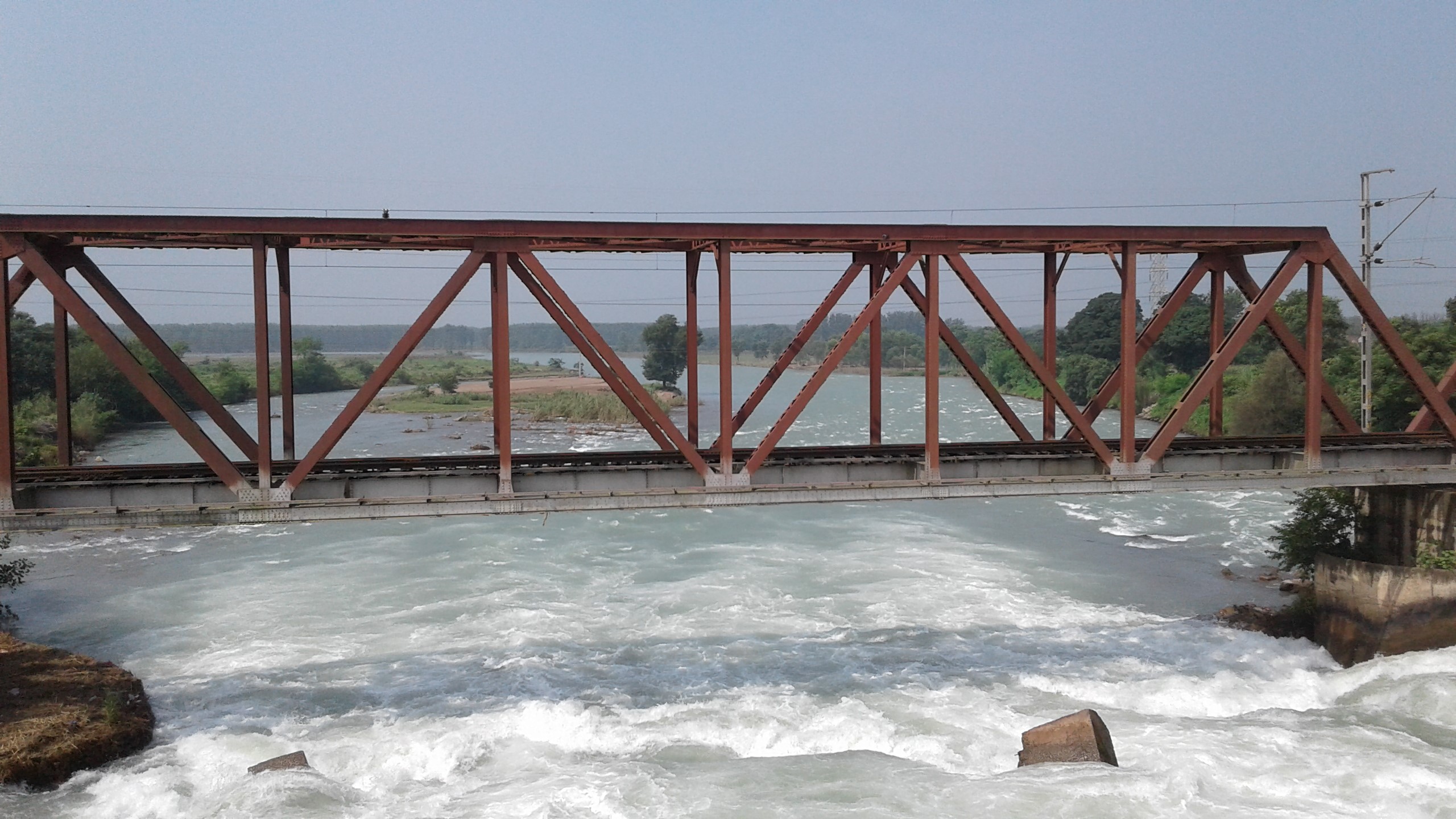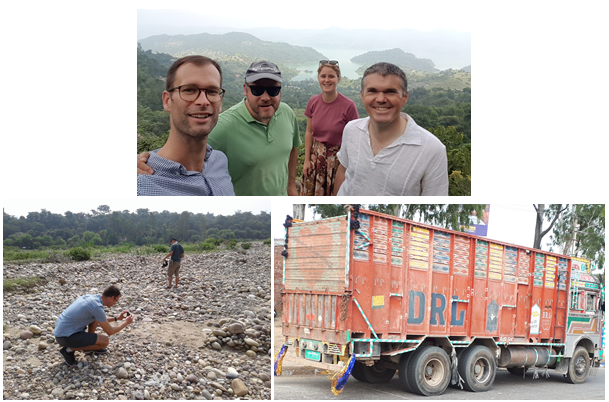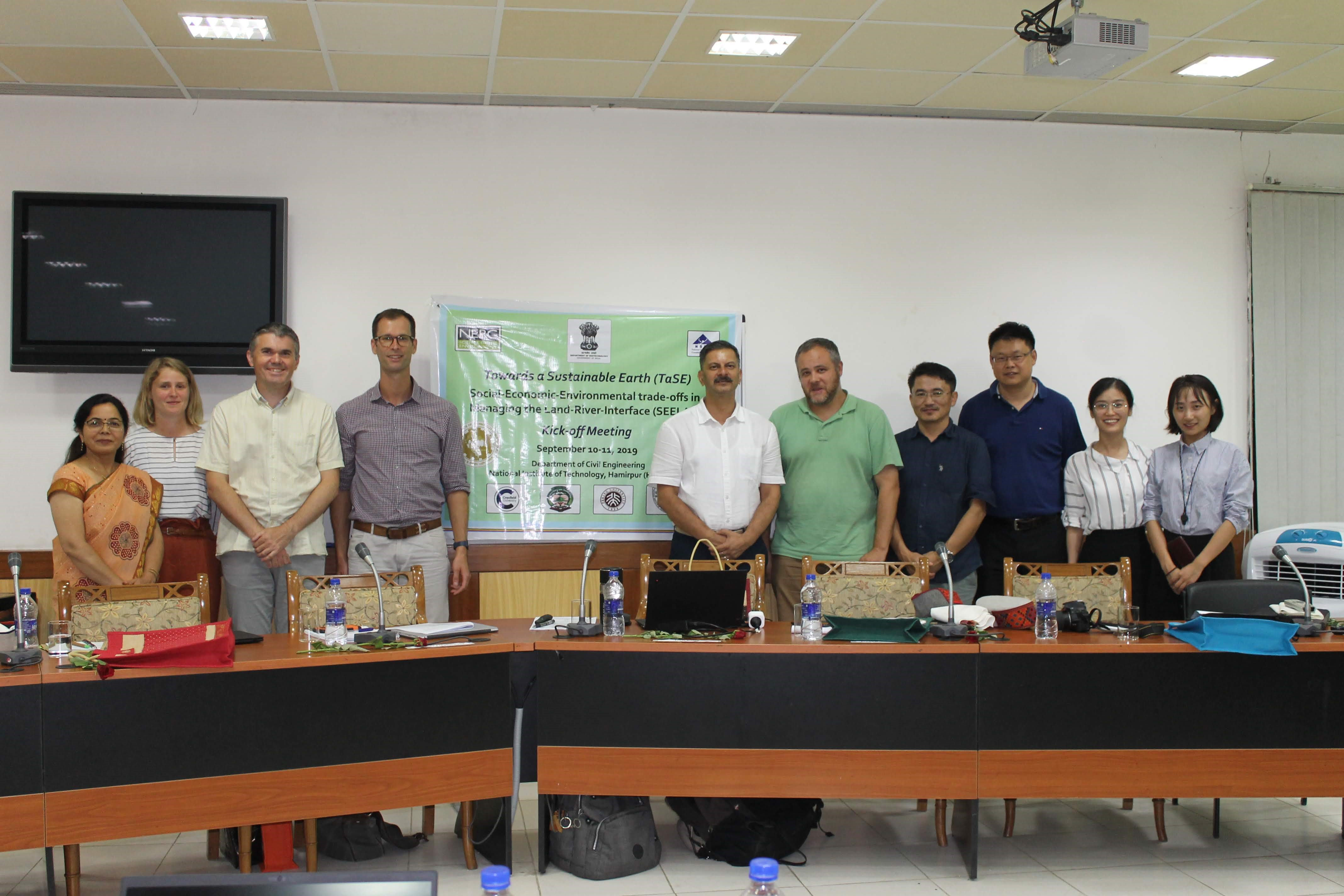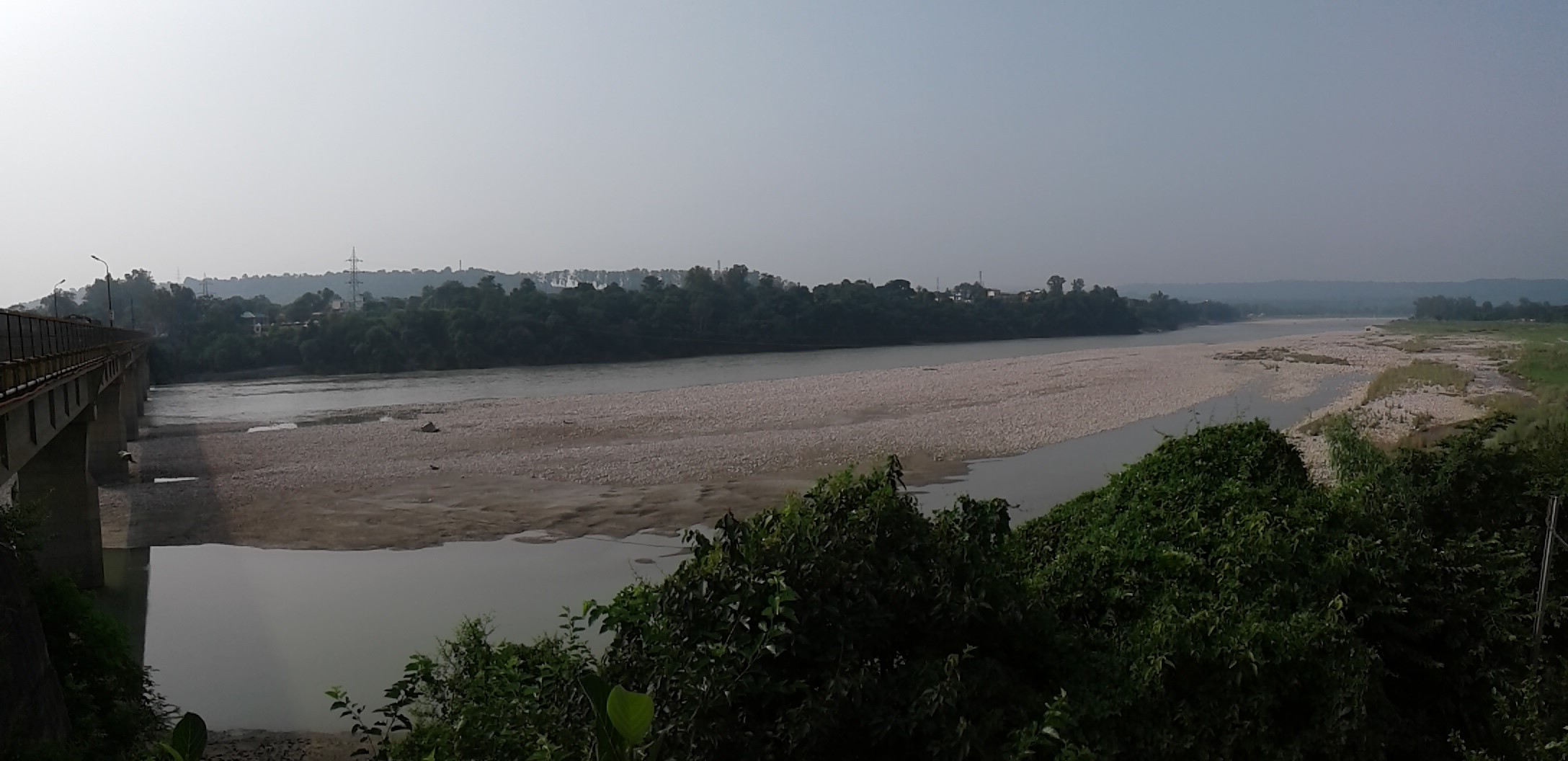Rivers connecting countries and people in India
20/09/2019

Imagine: You’re a taxi driver in India and you pick up four Europeans from the airport for a trip to the foothills of the Himalaya. You quickly learn that whenever the car crosses a bridge, your passengers start to take pictures of the river below. Sometimes, when it’s a large river, they even ask you to stop so that they can better enjoy the view or even set foot on a dry riverbed. Four days long, you drive around with them, looking at rivers, across the plains of Punjab into the hills of Himachal Pradesh. Being a taxi driver, you sure have seen stranger things… But still, you wonder: what were they doing?

We, those four passengers, were researchers from Cranfield University, travelling to Hamirpur National Institute of Technology (NIT) in India to attend the kick-off meeting of the research project “Social-economic-environmental trade-offs in managing the land-river interface” together with our Indian and Chinese colleagues. So yes, you guessed it right, the project is about rivers; the Sutlej and Beas Rivers.
In general, rivers and the land that surrounds them are focal points of economic activity and development in most countries. However, they are rarely managed in a holistic manner. Institutional boundaries, socio-economic drivers and barriers, and complex interactions in environmental processes limit severely our ability to integrate policies across the Land-River-Interface (LRI). As a result, management decisions often have unintended social, economic, cultural and environmental consequences locally and further upstream/downstream in the catchment. The aim of this NERC-funded project is to investigate how management causes trade-offs for people and the environment at different locations and times to support the design of integrated solutions.
So, after a trip along winding roads scattered with people, cows, monkeys and colorful lorries, we were warmly welcomed by our Indian colleagues in Hamirpur with a traditional opening ceremony to kick-off… well, the kick-off meeting. During the meeting itself, we discussed our needs, ideas and plans for each work package (i.e. pieces of the research allocated to the research teams according to their respective expertise), as well as how to best plan the research to optimally make use of local resources and integrate our work towards achieving the aim and objectives of the project.

But perhaps more importantly, we also went on a fieldtrip to explore our study catchment. Before going on this trip to India, we extensively studied historic maps and spatial data on the Sutlej and Beas Rivers, so we already had a good idea about the local geography. But only when seeing these grand rivers and their valleys with our own eyes, we were able to fully appreciate the overwhelming size and meaning of these rivers for people and environment. The roaring waters of the Sutlej-Beas river system connect three countries, originating in the Tibetan plateau in China, flowing through the Himalaya and plains in northeast India, to eventually join the Indus River in Pakistan. Along the way, its water passes numerous dams and generates electricity, continuously transforms the landscape, irrigates crops, provides drinking water, maintains fish populations, creates unique ecological habitats, provides leisure spaces, and bares important spiritual and cultural meanings. However, during our trip we also witnessed the signs of how these waters can threaten livelihoods, flood villages, damage roads, and carry huge sediment loads across the landscape. Even though we could only see a fraction of the rivers during our trip, these snapshots were enough to confirm this piece of the world is a very fascinating place with many complex dynamics between environmental processes and human activities, making the Sutlej-Beas land-river interface a critical area for sustainable development. So now that we have kicked-off, we’re diving right in it. Keep posted for some exciting river stories in the future!


Categories & Tags:
Leave a comment on this post:
You might also like…
Preparing your work for Turnitin submission
Before submitting your work into Turnitin for similarity checking, if you have used referencing software then you may need to take some important steps first. Mendeley and Zotero integrate with MS Word by embedding field ...
The fast track to supercar engineering: My Cranfield journey
It’s been a dream come true to work on some of the world’s most prestigious supercars – the Aston Martin Valhalla, McLaren 750 & Artura, the GMA T.33. But every successful ...
Automotive Engineering: From student to hypercar innovation at Rimac
We sat down with recent graduate Thomas Perrin, to discuss how his year on the MSc in Automotive Engineering at Cranfield University propelled him from the lecture hall directly into the ...
What this year at Cranfield really meant to me
Every Cranfield journey is unique. In this alumni reflection, Zachea Scicluna shares what her year at Cranfield truly meant, from facing uncertainty to gaining hands-on experience in industry-backed projects. I’ve been reflecting (and delaying) ...
Preparing for assignments and exams?
Sorry! We know it seems a bit mean to mention the exams in January rather than looking forward to the break before it! However, we know many of you will be thinking about your forthcoming ...
Screening for FTSE 100 companies on Bloomberg
So you’re researching an index and need some data on its constituent companies? Bloomberg’s Equity Screening tool makes light work of this, not just for the FTSE, but for indices, exchanges and sectors worldwide. Type EQS ...






